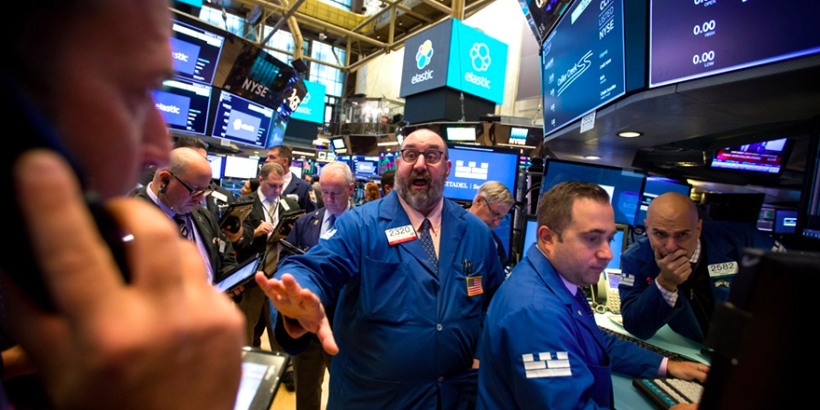Equity investors never welcome geopolitical tensions, but their reaction to them in the new year could be stronger after the fourth quarter’s $2.7 trillion rally sent share valuations skyward.
The wider the gap with fundamentals such as earnings and sales, the greater the potential for volatility when bad news lands, the logic goes. It was playing out Friday as futures on the S&P 500 slid as much as 1.6% and a related volatility index spiked after a U.S. airstrike in Iraq killed Iranian general Qassem Soleimani.
“The higher you go, the more volatility you’re going to get,” said Michael Purves, CEO at Tallbacken Capital Advisors. “Sellers are taking profits and getting out of Dodge.”
Advertisement
After surging 30% in 2019 as profits stagnated, the S&P 500 is trading at almost 22 times earnings, near the highest level of the bull market, which came in January 2018. A valuation model from JPMorgan Asset Management showed stocks are overvalued relative to the historic average when measured against earnings, long-term earnings, book value and cash flow.
Similarly, four valuation measures tracked by Leuthold Group are nearing or already scaling extreme heights.
Doug Ramsey, the firm’s chief investment officer, created a composite measure to gauge “modern era” value, using inputs including prices versus sales, long-term earnings and cash flow. The measure just recently jumped into its top decile of expensiveness in data going back to 1990.
The market’s overall placidity in recent months also has set the stage for an amplified reaction to geopolitics. If the decline in futures were to hold, it would be the S&P 500’s biggest loss since Oct. 8.
“High valuations, the fact that we’re in a very old cycle, at least by calendar standards — people are already a little concerned what that means for how long this cycle can go,” said Jim Paulsen, chief investment strategist at the Leuthold Group. “This is something that came completely out of left field, a completely spontaneous event. When you have something like that, that in itself creates a bigger reaction than would other events that you’ve already thought about.”
The only context in which equities remain reasonably priced, according to JPMorgan, is relative to fixed income, a comparison that improved Friday as shares fell and Treasuries rose. The S&P 500’s earning yield — profit relative to share price — is 2.76 percentage points higher than the 10-year yield, way above its historic average in a valuation method known as the Fed model.
While not accepted by everyone, the stock-bond valuation case was cited by bulls throughout 2019 as a reason to buy the dip. It was a profitable strategy. S&P 500 futures fell 1.5% or more on 10 separate occasions last year and the index ended up surging almost 30%.
“I had raised a little cash in the last 2 days, taking some profits and looking to buy into early volatility,” wrote Jason Browne, president of Alexis Investment Partners. “If things don’t escalate, the rally should resume with little damage — 3% to 5%. I’m hopeful for that outcome, but we’ll have to see. I think the best reaction for now is to be patient and avoid the temptation to overreact.”
[More: Stocks face 50% odds of correction next year, Vanguard’s Davis says]



